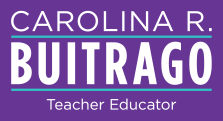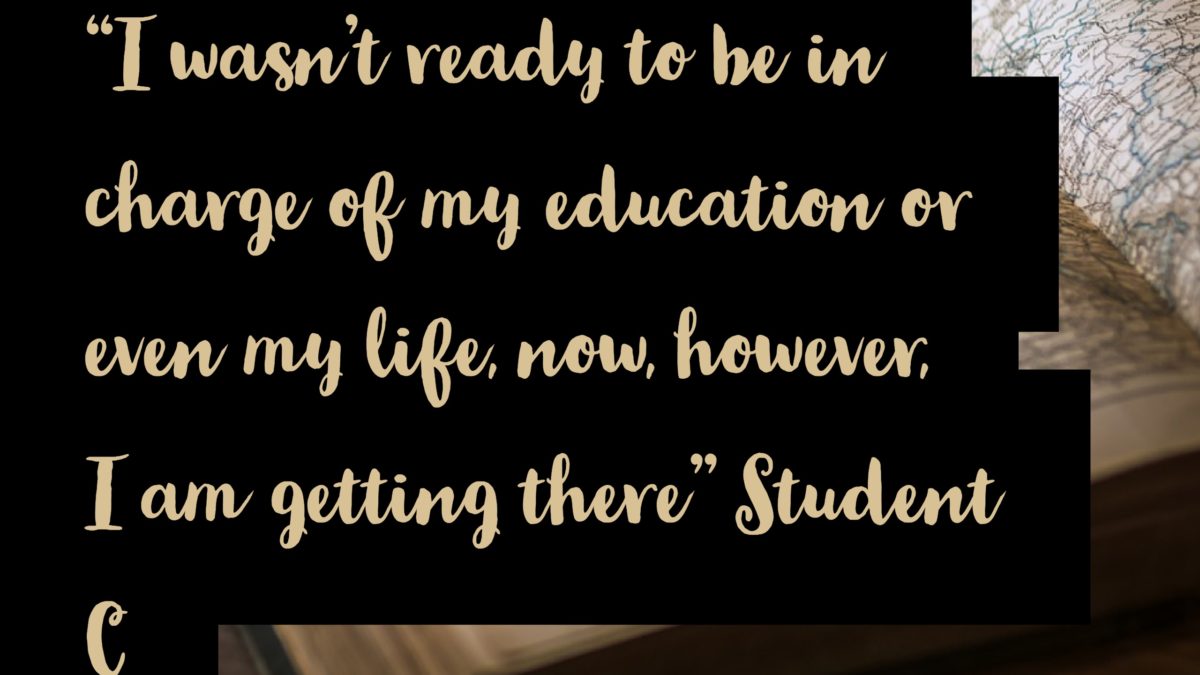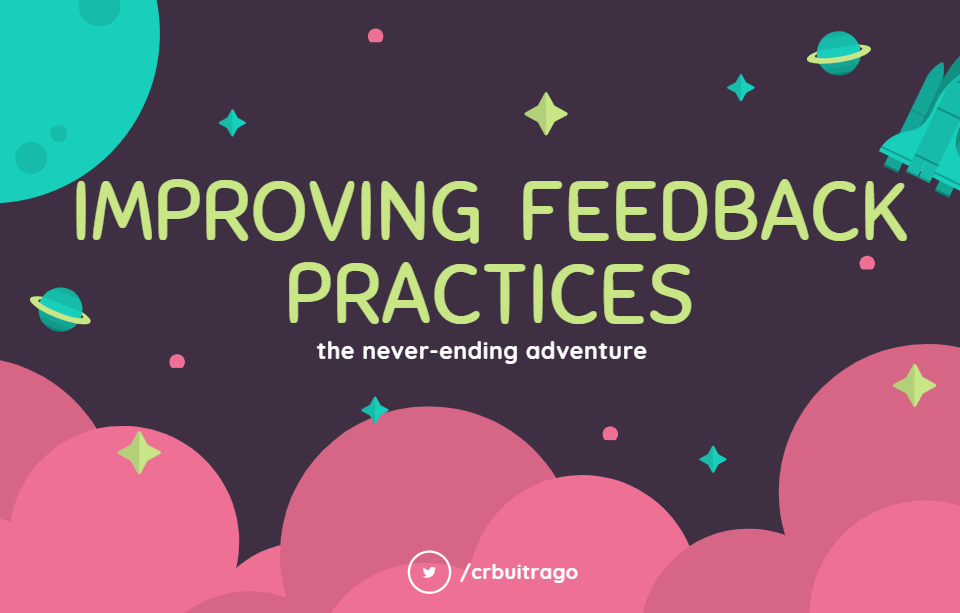How I became a better teacher by monumentally failing at implementing flipped mastery
If you haven’t failed in the classroom lately, you aren’t pushing the envelope far enough. “Safe” lessons are a recipe for mediocrity at best.
Dave Burgess
Teach like a Pirate
Had I listened to Cara Johnson in the Flipped Learning Certification Level 2 promptly, I wouldn’t have lost control of my content in my attempt towards mastery. Had I followed Jon Bergmann’s advice in his blog post and podcast, I would have been more careful about not getting drowned in papers in order to verify my student’s work. Had I listened to my own advice, the advice I give my research students about doing a thorough literature review before attempting any pedagogical implementation, I wouldn’t have messed up as badly as I did. But, I didn’t do any of those things, and the learning I got out of all of my mistakes was insurmountable, and now, I feel ready for a second try.
But, what could have been so bad? Well, ehhh….everything.
I’m dead serious. Everything pretty much sucked and today I strip of my ego to tell you the full story in the hope that by laying it on the table, nobody makes my mistakes ever again. Are you ready?
The mistakes I made
Mistake # 1: I decided to implement flipped mastery with a very vague knowledge of it.
I am a big hypocrite. I direct research for students in graduate school, and before I approve any project, I always ask my students to get fully documented and know “what has been done” in their field before going into it with a new proposal. Well, I am a big fat hypocrite because I omitted this step myself. And don’t get me wrong, I did read…a bit. I read Bergmann and Sams (2012) book and reread the chapter on mastery, and I thought I had a good idea of how things were supposed to work. You know, students would access materials on their own and I would check students mastery through mastery checks….piece of cake. Well, this fake feeling of “I know what I had to do and it is easy” led me to make my second mistake.
Mistake # 2: I went into the classroom and presented the project to students without fully planning the mastery.
I worked at a Publishing house for some time, so trust me, I know my way around a “sales pitch”, so I “sold” my project. Students bought into my idea of “you will access the content for the grammar component of the course autonomously and I will run mastery checks on the different grammar points for the course, so when you are ready to take one, you can and then move on to the next grammatical structure”. It sounded easy, it sounded flawless and foolproof. Au contraire…as the semester progressed, the holes in my plan started to reveal themselves. Students started to lose track of the grammar structures they were supposed to access, life got in the way and as there was no clear path as to how to progress through the grammar, students just ignored it, I was not creating mastery checks fast enough, so students saw no point in getting ready, among others. Then my third mistake…
Mistake # 3: I didn’t prepare the mastery checks on time (big blunder).
I thought I would have time to create the mastery checks as the semester progressed. Big mistake. First of all, I didn’t have a clear idea of how I would check whether students mastered the grammar structures they “were learning” (fourth mistake) independently. I thought of grammar quizzes done in my course platform, Coursesites by Blackboard. After all they would be automated and graded in the platform -I did three of those. But then, I realized that you can’t really show “mastery” of a grammar structure by answering multiple choice questions (after 15 years of EFL teaching I should have known better!) So I decided to add a few compositions into the mix, but the compositions were not automatically graded (hmm, more work!)…I was going downhill with this! So, by the end of the first academic term, I realized we hadn’t had a “mastery check” day, so I organized an in-class flip for one. Great idea! Oops, but i hadn’t talked to Martha about Answer Keys! Oh Lord, so I saw myself checking like 8 different handouts for each student by hand…!!! (Down a slippery slope!!).
Mistake # 4: I told students they should watch the grammar videos autonomously. Period. No accountability? Really?
I taught a course called “Autonomous learning environments” for 4 years and I didn’t remember any of the content from that course this semester (well, not anything…I had students set goals and reflect, at least). But really, I should have known better. I just told my students to watch the videos autonomously and dumped the responsibility on them without any attempt at pacing or organizing the experience for them. Total mess. By the end of the first term, when it was time to grade, students and I realized they hadn’t watched all the videos they were supposed to, so we had to cram the watching to a weekend and assess like that! (Mess!) Students learning was not deep enough, it may have been enough for the test, but not long-lasting, that’s for sure. I misthought autonomy as loneliness and as students working by themselves without a clear direction as to where to go and the possible routes to take.
BONUS STORY: As if it hadn’t been enough, one of my students didn’t like “my methodology”. He even stated it in his final composition, he said: “English class without an English book is not an English class”…his attitude and his words really got to me. I am always innovative and I know that my students, future teachers, will be very likely to replicate what they see in my classrooms in their own once they graduate. So I always try to push them forward and have them think outside of the box, but having a student who thought my methodology was not conducive to learning was really frustrating. I think too frustrating. This student really got my motivation to drop and I felt incompetent moat of the time. As if I weren’t doing my job. As we say in Spanish…mejor dicho! (Sigh).
I entirely messed up a great learning – teaching opportunity because of my lack of planning and a short-sight for details and possible obstacles. I had good intentions, but realized that I needed more than good intentions to make flipped mastery work in my classroom. So, I started to do “my homework” as the semester went on and I felt more and more terrible about myself (I’m pretty rough on myself!). So I learned a few lessons that I would like to share with you as follows.
Lessons learned
Practice what you preach.
I am a mom, so I preach a lot without practicing what I say. I thought I could do the same this past semester and failed heroicly. As I said, I constantly tell my research students to be fully documented about their field before attempting to implement, and I did exactly the opposite. However, I don’t want you to get me wrong. I know that some of the best experiences in life are those you don’t plan so thoroughly for. However, when working with students and holding people’s future in your hands, it kind of becomes an unethical choice not to be fully-prepared. So, if you really do your research, you might be able to implement mastery without so much trouble. Besides, there are amazing resources out there to learn about it:
- Flipped Learning Global Certificate Level II. In this certification course offered by the Flipped Learning Global Initiative you have an entire unit on flipped mastery that can change the way you see things. Also, the unit on gamification makes a really good connection to mastery. And if I may publicize, Martha Ramirez and I also did a pretty cool unit on In-class flip which can help to build the mastery learning experience.
- Jon Bergmann’s blog posts and book chapter about his and Aaron Sams mastery classroom. These resources do inspire and motivate you to give mastery a try.
- Bloom’s mastery learning model. When googling “mastery learning” I got a good amount of resources connected to the work of Benjamin Bloom,who apparently was one of the first people to talk about this topic and propose an interesting model for mastery that includes practice, corrective feedback and challenging enriching activities (Guskey, 1987). I’m definitely trying this out next semester.]
Details are important.
I don’t know how to put this, but I am more of a big idea person…you know, I just think of things to do and want to jump on them right away. However, I’m not really good at seeing , previewing or planning the details necessary for my plan to work. Let me try to unravel this mess of an idea. When I planned a lesson, I planned the big concepts (students will create a story), but I didn’t necessarily put down on paper the steps or details to get there (students will brainstorm genres and topics for stories, then they will make a mind map for their characters, settings, and plot, then they will make a storyboard, then they will write a draft, etc.). I wouldn’t have been able to put together the second list I just shared with you if my mastery hadn’t failed. Failing so miserably at my flipped mastery class I realized I had to be more careful about the steps in the routes I want to provide my students to follow in order to accomplish the class goals.
Now, I know the importance of detail. I know that I have to have clear expectations for my students to be able to fulfill them, I need to provide steps to my students, so they can perform at their highest potential…I am a teacher, and my mission is to teach. As a flipper, I’m not big on direct instruction, but this semester I realized that even though I don’t want to play the role of the “sage on the stage”, I do have some experience that can benefit my students and can save them a lot of pain.
Helping people become autonomous takes a lot of work and hand-holding.
As I presented in my mistake 4, I dumped the responsibility of video watching on my students and was then surprised they didn’t cope. Well, I learned that if I want to make my students autonomous, I need to really walk them through my expectations and their capability and show them how to deliver. I initially had good intentions about this (I even gave each one of my students a notebook to be used as a journal for the class), but I didn’t follow through. I need to be very disciplined in planning and sticking to dates for video watching, exercises and mastery checks and guarantee to my students they can be autonomous.
Some people just don’t want to be helped.
I always say that I suffer of the Michelle Pfiffer syndrome (you know, Michelle Pfiffer as that teacher in the movie Dangerous Minds?). I wish I could help all of my students, so I try to become their friend and to show them that I care about them as people, not only as students, but some people, like the student in the story just don’t want to be helped. I tried all that I could, but he just didn’t like me, and that’s okay. I just had to make peace with that. I will always try to the best of my knowledge and with all the strength of my heart, but I have to make peace with the fact that sometimes, and only some, people will not like me to change them.
So, even though this experience was very tough from different angles, it did teach me a lot! It taught me I shouldn’t surrender, and it is okay to struggle. Only when you are getting out of your comfort zone and experiencing new things is when you struggle…and as Dave Burgess says it difficulty is the point. Now, I am empowered to start next semester with the right foot and make a real difference to my new group. Thus, here’s what I plan to do next semester.
2018-1 Action plan
Create a structured autonomous learning plan for my students.
I plan to structure the autonomous learning experience. So I will create some formats for students to keep track of their video watching, exercises, and mastery checks. Also, I will create a format for their S.M.A.R.T. goals for the semester and each term, and I will plan official dates in my syllabus to revise them with students. I will include reflection prompts on the course platform for students to have them handy.
I will help my students pace their grammar learning
My course book has 12 units, out of which we manage to do 10 at most during the semester. I will pace 4 units per term, so that students work on the grammar structures for those 4 units independently (but guided). And I will have grammar practice days in the form of in-class flips for students who want to practice with peers and with me in class. There will be weekly checkpoints, or Benchmarks as Bergmann calls them, for students to keep the grammar in their radar.
I will differentiate opportunities to show mastery
I carried out a survey with many teachers (thanks friends, if you want to participate, it is still open) and I corroborated the multiple opportunities available to show mastery. So, I will use three differentiated learning strategies (think tac toe, learning menu and in-class flip) as a way to offer differentiate the way my students will show mastery of certain grammar topics.
As you can see, the learning I got from this semester’s failed attempt towards flipped mastery made me really put things in perspective and make informed decisions in order to have a better experience next time. Teaching is not about being perfect, but about making everything count and generating better learning experiences for our students every day. I failed miserably, but I think I will succeed next time I try this out. I hope you enjoyed this post! I would very much appreciate your comments.
It wasn’t all bad… the following is a quote taken from another student’s final composition… for what is worth, I have to also say that most of my students did like the class…I’m just annoying…
And allow me to close with a great quote by Dave Burgess, whose book Teach like a Pirate came into my life in the perfect moment:
The key to failing without quitting is to shift your paradigm to believe there is no such thing as true failure—only feedback.
Dave Burgess.






3 Comments
Very inspiring! Thanks! 🌟
Wow!
Great to hear that from you my friend!
How are you doing?
Yeah yeah, best intentions and learning experiences and all that … but when you are living through your own mistakes (and you now there’s 4 weeks left to grind through to the end of the term!) it just feels brutal.
Thank YOU so much for taking the time and mental/emotional effort to share your full experience with us! I’m writing here immediately after reading, but this post deserves some further reading and consideration for me. Will stay in touch!